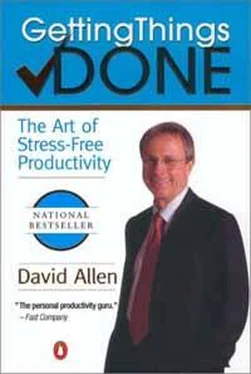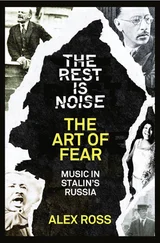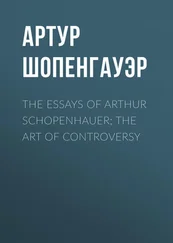An idealist believes that the short run doesn't count. A cynic believes the long run doesn't matter. A realist believes that what is done or left undone in the short run determines the long run.
—Sidney
The Power of Natural Planning
The value of all this natural project planning is that it provides an integrated, flexible, aligned way to think through any situation.
Being comfortable with challenging the purpose of anything you may be doing is healthy and mature. Being able to "make up" visions and images of success, before the methods are clear, is a phenomenal trait to strengthen. Being willing to have ideas, good or bad, and to express and capture all of them without judgments is critical for fully accessing creative intelligence. Honing multiple ideas and types of information into components, sequences, and priorities aimed toward a specific outcome is a necessary mental discipline. And deciding on and taking real next actions—actually moving on something in the physical world—are the essence of productivity.
Being able to bring all these ingredients together, with appropriate timing and balance, is perhaps the major component of professional competence for this new millennium. But it's not yet the norm in professional behavior; far from it. It's still a daunting task to apply this awareness to all the aspects of personal and professional life. But even when only portions of the model are inserted, tremendous benefit ensues.
The feedback I have gotten over the years in my consulting, teaching, and coaching with this model has continued to validate that even the slightest increase in the use of natural planning can bring significant improvement. To see brainstorming about almost every aspect of their lives becoming a standard tool for many people is terrific. To hear from executives who have used the model as a way to frame key meetings and discussions, and have gotten great value from doing that, is gratifying. It all just affirms that the way our minds naturally work is the way that we should focus to make anything happen in the physical world.
The model is simply the basic principle of determining out-comes and actions for everything we consider to be our work. When those two key focus points become the norm in our day-to-day lives, the baseline for productivity moves to another level. The addition of brainstorming—the most creative means of expressing and capturing ideas, perspectives, and details about projects—makes for an elegant set of behaviors for staying relaxed and getting things done.
Shifting to a Positive Organizational Culture
It doesn't take a big change to increase the productivity standards of a group. I continually get feedback indicating that with a little implementation, this method immediately makes things happen more quickly and more easily.
The constructive evaluation of activities, asset allocations, communications, policies, and procedures against purposes and intended outcomes has become increasingly critical for every organization I know of. The challenges to our companies continue to mount, with pressures coming these days from globalization, competition, technology, shifting markets, and raised standards of performance and production.
"What do we want to have happen in this meeting?" "What is the purpose of this form?" "What would the ideal person for this job be able to do?" "What do we want to accomplish with this software?" These and a multitude of other, similar questions are still sorely lacking in many quarters. There's plenty of talk in the Big Meetings that sounds good, but learning to ask "Why are we doing this?" and "What will it look like when it's done success-fully?" and to apply the answers at the day-to-day operational level— that is what will create profound results.
Empowerment naturally ensues for individuals as they move from complaining and victim modalities into outcomes and actions defined for direction. When that becomes the standard in a group, it creates significant improvement in the atmosphere as well as the output. There are enough other problems to be concerned with; negativity and passive resistance need to continually give way to a focus on the desired results at the appropriate horizons.
The microcosm of how people deal with their in-baskets, e-mail, and conversations with others will be reflected in the macro-reality of their culture and organization. If balls are dropped, if decisions about what to do are resisted on the front end, if not all the open loops are managed responsibly, that will be magnified in the group, and the culture will sustain a stressful fire-and-crisis siege mentality. If, in contrast, individuals are implementing the principles of Getting Tilings Done, the culture will expect and experience a new standard of high performance. Problems and conflicts will not go away—they remain inherent as you attempt to change (or maintain) anything in this world. The operational behaviors of this book, however, will provide the focus and framework for addressing them in the most productive way.
A vision without a task is but a dream, a task without a vision is drudgery, a vision and a task is the hope of the world.
—From a church in Sussex, England, ca.1730
I HOPE THIS book has been useful — that you have started to reap the rewards of getting more done with less effort and stress. And I really hope you have tasted the freedom of a "mind like water" and the release of your creative energies that can come with the application of these techniques. Those who begin to implement these methods always discover there's more here than meets the eye, and you may have begun to experience your own version of that.
I'll bet Getting Things Done has validated much of what you already know and have been doing to some degree all along. Per-haps, though, it will make it much easier for you to apply that common sense more systematically in a world that seems to increasingly confound us with its intensity and complexity.
My intent is not to add more to the plethora of modern theories and models about how to be successful. I have tried, on the contrary, to define the core methods that don't change with the times, and which, when applied, always work. Like gravity, when you understand the principle, you can operate a lot more effectively, no matter what you're doing. Perhaps this is the Leading Edge of Back to Basics!
Getting Things Done is a road map to achieve the positive, relaxed focus that characterizes your most productive state. I invite you to use it, like a road map, as a reference tool to get back there whenever you need to.
To consistently stay on course, you'll have to do some things that may not be habits yet: keep everything out of your head; decide actions and outcomes when things first emerge on your radar, instead of later; and regularly review and update the complete inventory of open loops of your life and work. I hope by now you at least have established a reference point for the value these behaviors create. Don't be surprised, though, if it takes a little while to make them automatic. Be patient, and enjoy the process. Here are some final tips for moving forward:
• Get your personal physical organization hardware set up. Get your workstation organized. Get in-baskets. Create a personal filing system—for work and home. Get a good list-management organizer that you are inspired to play with. I also suggest that you give yourself permission to make any changes that you have been contemplating for enhancing your work environments. Hang pictures, buy pens, toss stuff, rearrange your work space. Support your fresh start.
• Set aside some time when you can tackle one whole area of your office, and then each part of your house. Gather everything into your system, and work through the Getting Things Done process.
Читать дальше











